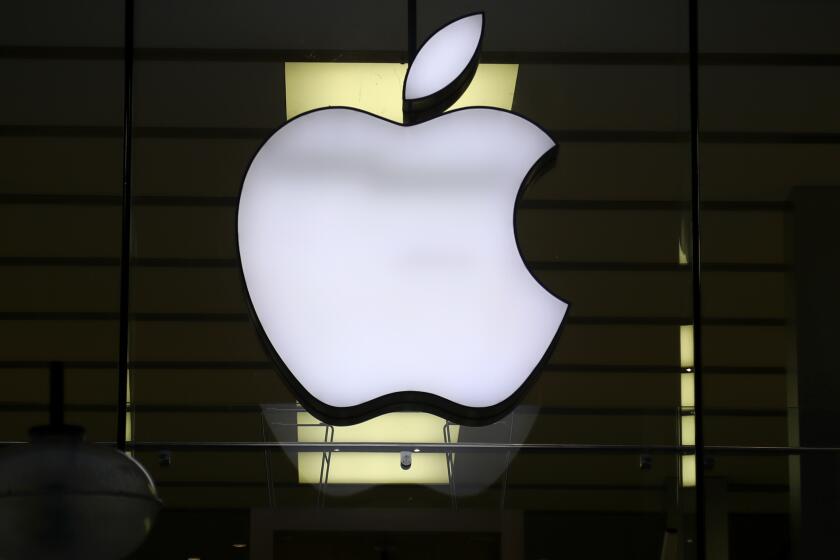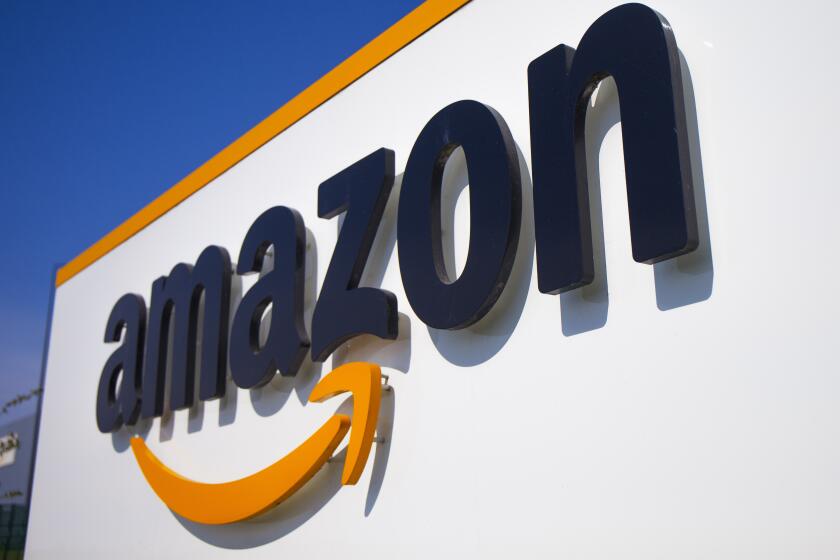U.S. Computers Have an Edge to Pry Open Market in Japan : Technology: IBM-compatible models are becoming popular because they’re more powerful and often cheaper.
- Share via
TOKYO — When he’s at work in his research lab, engineer Takashi Sumita makes do with a personal computer made by NEC Corp. that is maddeningly slow and hard on the eyes. Since NEC has more than half the Japanese market for PCs, “the company feels it’s safest,” he says.
At home, Sumita turns on his powerful IBM-compatible Packard Bell machine. Using American engineering software he bought from a mail order company, he speeds through complex calculations, enjoying the crisp, color images on the screen.
Sumita is one of thousands of Japanese personal computer users who, frustrated with the high-priced, technologically dated offerings of Japanese computer makers, are turning to the machines compatible with the IBM AT--the world standard.
The growing popularity of standardized machines could help open Japan’s $5.4-billion personal computer market to serious competition from the hundreds of American companies that have developed computers, accessories and software for the giant IBM-compatible market.
These American companies have honed their selling skills in intense market share battles in the United States to produce low-cost, well-designed products for the mix-and-match market. Meanwhile, Japanese companies--once believed to be a looming threat in the U.S. market--have fallen behind in PC performance and pricing by concentrating on developing computers that run software designed only for their own hardware.
Japanese PCs, critics complain, are expensive and slow, weak on networking, have poor graphics and don’t do a good job of running Microsoft’s popular Windows software.
When using the Windows program on an NEC machine, for example, turning to the next page of a document can take an “infuriating” 15 seconds, contrasted with an almost instantaneous scroll on an equivalent IBM-compatible machine, says Bill Smale, a Tokyo computer consultant.
Yet, U.S. companies will have an uphill battle competing in a market where brand familiarity, Japanese-language software and large sales and service networks have helped local companies lock up as much as 90% of the market.
U.S. companies are taking up the challenge by offering 24-hour toll-free lines to answer consumer questions. They are also advertising heavily. Moreover, they are betting that Japanese consumers will be swayed by their lower prices and better performance.
Earlier this month, Compaq Computer Corp. introduced a line of IBM-compatible computers at half the price of similarly configured Japanese models.
‘We are not here to introduce a price war,” said Masaru Murai, president of Compaq’s Japan subsidiary. “We are here to expand the market.”
IBM last week announced a new series of personal computers costing half of its domestic competitors’ offerings. Saying it was launching a “personal computer revolution,” the company announced that it was developing a new sales network to sell the computers, including discount stores.
Apple Computer and Digital Equipment announced smaller price cuts last week that nevertheless made their products substantially cheaper than the competition.
Japanese companies maintain that they are not afraid of a foreign invasion.
“Japanese consumers want to be coddled and have software written for them,” says Michael Beirne, a Fujitsu spokesman. “They don’t buy on price.”
NEC, whose 98000 series of computers accounts for 53% of the Japanese PC market and is the closest thing there is to a Japanese standard, says its huge networks of dealers, its excellent reputation for service and its library of 10,000 software packages continues to put it in a strong position.
NEC increased it share of the Japanese personal computer market by a percentage point last year against all expectations.
Japanese companies also maintain a strong edge over American firms in the growing laptop market. And most Japanese are interested primarily in word processing, for which the power of IBM compatibles is unnecessary.
A key reason Japanese firms have held their ground is that consumers have not had the choice available elsewhere in the world because computers able to handle the Chinese characters used in the Japanese language could not also be compatible with the IBM AT.
IBM changed that last fall when it offered to license a newly developed Japanese version of the popular IBM AT operating system called DOS/V. In a direct challenge to NEC’s monopoly power, IBM created a group to promote the standard.
Today, 26 companies offer 140 computer models that run DOS V. Fans of the new standard say they love to flip through the huge catalogues of accessories that are available for the IBM AT and therefore can run on DOS/V.
The new software’s handling of the complex Chinese characters has won rave reviews, and software companies are rushing to offer their products in the Japanese market. A catalogue published in May listed 800 Japanese and foreign software programs that run on DOS/V. Today there are 1,700 packages to choose from.
Apple’s success with the Macintosh in Japan has already shown that good software can win sales, industry executives say. Apple computers are finding their way into electronic publishing and other fields where the PCs’ graphics software is recognized as clearly superior to software available locally. Since the amount of software available on IBM-compatible computers is even greater, observers say that penetration too will be greater.
o Companies like Mitsubishi Electric, Hitachi, Canon and Sony, which have failed to carve out a large share of Japan’s PC market, hope to get another chance by backing the IBM standard.
You can sense the shifting winds in Akihabara, Tokyo’s electronics bazaar. Here, 24 shops already specialize in IBM-compatible computers and software. Most opened this year.
“Sales are just taking off,” says Yoshiaki Matsuzaki, assistant manager at a six-story computer discount store called Laox. The company recently phased out some Japanese computer models and expanded floor space dedicated to IBM-compatible machines.
One warning sign for Japanese computer makers is the popularity of IBM-compatible machines among game fanatics.
“These people will buy the fastest IBM-compatible computer just so they can use the latest American game machine,” says Hiroo Honda, who sells more than $20,000 a month in American software from his tiny fifth-floor computer shop. The Japanese media, which generally favors domestic producers, is siding with the IBM-compatible camp in this battle.
The November issue of Trendy, a popular monthly magazine that follows social and business trends, devoted 29 pages to the IBM-compatible phenomenon, suggesting that NEC’s proprietary system was on its way out because it was too costly, old and slow. Focus, a popular weekly, asked why domestic brands were so much costlier than IBM-compatible computers when they offered inferior performance.
“Once you see the resolution of these (foreign) machines, you’ll never want to go back to a domestic brand,” gushed one store owner quoted in the article.
Japan’s Personal Computer Market NEC Corp. dominates Japan’s $5.4-billion personal computer market, but American PC makers believe weaknesses cited by critics of NEC products provide an opening for them to take market share. Japanese Personal Computer Market Share in 1991 NEC 53.1% Fujitsu %8 Toshiba 7.9% Epson 7.7% IBM Japan 6.9% Others* 16.4% Annual PC Sales in Japan (Figures in billions of dollars) 1985 $3 1986 $3.6 1987 $4.4 1988 $5.4 1989 $6.3 1990 $5.6 1991 $5.4 * Includes Apple, AST, Compaq, Dell, and several small Japanese firms. Source: Dataquest Inc.





